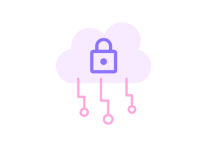
The strong media coverage and the multiplication of uses and projects around the distributed ledgers of the blockchain would almost make us forget that it is not universal and that it has limits.
The craze for the blockchain could make us believe that it is a solution to all problems… Unfortunately, if the use cases are multiplying, the blockchain does not provide an answer to everything, and for many projects, there are better and more effective solutions.
In fact, we offer you another vision of the blockchain to understand two opposing concepts:
The classic one of the centralized ledger, which is found on the majority of databases. Its mode of operation is simple, you ask a question, and the answer is held in a single database. The response is held in the cadastral database. That the blockchain is based on decentralized ledgers. That is to say that the answer is held by several identical ledgers. Instead of addressing a single base, you ask the question of someone you meet, such as “Who is the Queen of England?” ”, and the answer is held by all the people who present themselves.
Blockchain replaces the centralized ledger with distributed ledgers, where everyone can find the answer since everyone has the information. We can of course imagine that the central ledger is duplicated and held by everyone, and therefore can query any subset of the distributed ledgers, since “everyone has the answer”! But is this really reasonable, or even feasible?
In reality, if the advantages of the blockchain are obvious, at the same time certain key characteristics of this technology serve it:
The flow:
A blockchain-based repository can only process 10 transactions per second, making it a very slow database. Many users are satisfied with low speed, but the technology will not resist high-speed applications! Admittedly, the infrastructures will evolve and gain power, which could eventually remove this limitation, but at what cost? And is it realistic?
Consensus:
For a blockchain journal to work, all parties must agree to use the same ledger. It is feasible when there is a central organization that can force all parties to use it. But, in many industries, the competitive landscape is too fragmented to come to a consensus on who should manage the ledger.
The decentralization of communications:
A centralized ledger requires continuous communication. Blockchain can instead work even when there is no communication channel available. That sounds like a plus until you realize most of the world now has continuous data communications. In this environment, blockchain loses one of its key advantages, and implementing a centralized ledger will almost always be cheaper, faster, and more reliable than implementing a distributed ledger.
The use of the blockchain requires the meeting of a set of circumstances, otherwise, it cannot be the right solution. And in a professional approach, the domain must in the vast majority of cases have a central authority in order to impose on the parties the use of distributed ledgers. It is much easier said than done and maintained.
In fact, today the majority of blockchain projects rely on developed blockchain pilots. As these pilots are few in number, there are ultimately only a few blockchains deployed in production… So, before you rush and follow the media, take a moment about is blockchain the best way for your project?
